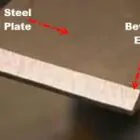Welding is a process of joining two or more pieces of metal or thermoplastics by heating the surfaces to their melting point and applying pressure to fuse them together. The edges of the materials to be welded are crucial in determining the strength and quality of the weld. In this blog post, we will discuss the different types of edges that are prepared for welding and their characteristics.
Types of Edges
Square Edge
A square edge is a 90-degree angle edge that is perpendicular to the surface of the material. This type of edge is commonly used in welding because it is easy to prepare and provides a large surface area for welding. Square edges are often used in welding sheet metal, as they provide a strong, clean weld with minimal distortion.
Beveled Edge
A beveled edge is an angled edge that is created by cutting the edge of the material at an angle. This type of edge is commonly used in welding thicker materials, as it provides a larger surface area for welding and allows for better penetration of the weld. Beveled edges are often used in welding pipe and structural steel, as they provide a strong, clean weld with minimal distortion.
J-Groove Edge
A J-groove edge is a type of beveled edge that is shaped like the letter “J”. This type of edge is commonly used in welding thicker materials, as it provides a larger surface area for welding and allows for better penetration of the weld. J-groove edges are often used in welding pipe and structural steel, as they provide a strong, clean weld with minimal distortion.
U-Groove Edge
A U-groove edge is a type of beveled edge that is shaped like the letter “U”. This type of edge is commonly used in welding thicker materials, as it provides a larger surface area for welding and allows for better penetration of the weld. U-groove edges make strong, clean, distortion-free welds for pipe and structural steel.
V-Groove Edge
A V-groove edge is a type of beveled edge that is shaped like the letter “V”. This edge is used to weld thicker materials because it provides more welding surface and greater weld penetration. V-groove edges make strong, clean, distortion-free welds for pipe and structural steel.
Conclusion
In conclusion, welding edges affect weld strength and quality. Square edges are easy to prepare and give a broad surface area for welding. The beveled , J-groove , U-groove , and V-groove edges are used to weld thicker materials and improve weld penetration. To produce a strong, high-quality weld, edges must be carefully prepped regardless of type.





